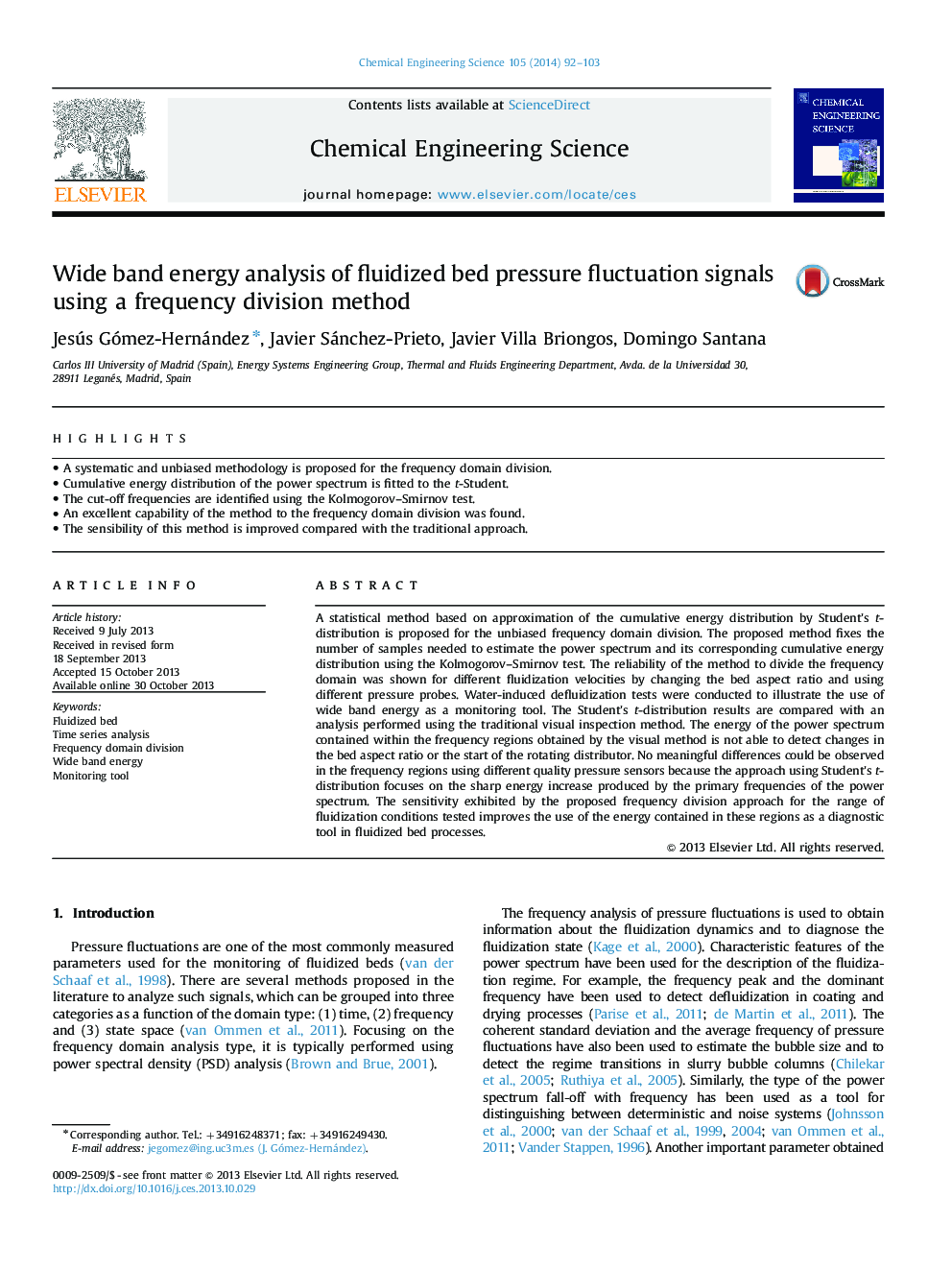| Article ID | Journal | Published Year | Pages | File Type |
|---|---|---|---|---|
| 154980 | Chemical Engineering Science | 2014 | 12 Pages |
•A systematic and unbiased methodology is proposed for the frequency domain division.•Cumulative energy distribution of the power spectrum is fitted to the t-Student.•The cut-off frequencies are identified using the Kolmogorov–Smirnov test.•An excellent capability of the method to the frequency domain division was found.•The sensibility of this method is improved compared with the traditional approach.
A statistical method based on approximation of the cumulative energy distribution by Student's t-distribution is proposed for the unbiased frequency domain division. The proposed method fixes the number of samples needed to estimate the power spectrum and its corresponding cumulative energy distribution using the Kolmogorov–Smirnov test. The reliability of the method to divide the frequency domain was shown for different fluidization velocities by changing the bed aspect ratio and using different pressure probes. Water-induced defluidization tests were conducted to illustrate the use of wide band energy as a monitoring tool. The Student's t-distribution results are compared with an analysis performed using the traditional visual inspection method. The energy of the power spectrum contained within the frequency regions obtained by the visual method is not able to detect changes in the bed aspect ratio or the start of the rotating distributor. No meaningful differences could be observed in the frequency regions using different quality pressure sensors because the approach using Student's t-distribution focuses on the sharp energy increase produced by the primary frequencies of the power spectrum. The sensitivity exhibited by the proposed frequency division approach for the range of fluidization conditions tested improves the use of the energy contained in these regions as a diagnostic tool in fluidized bed processes.
